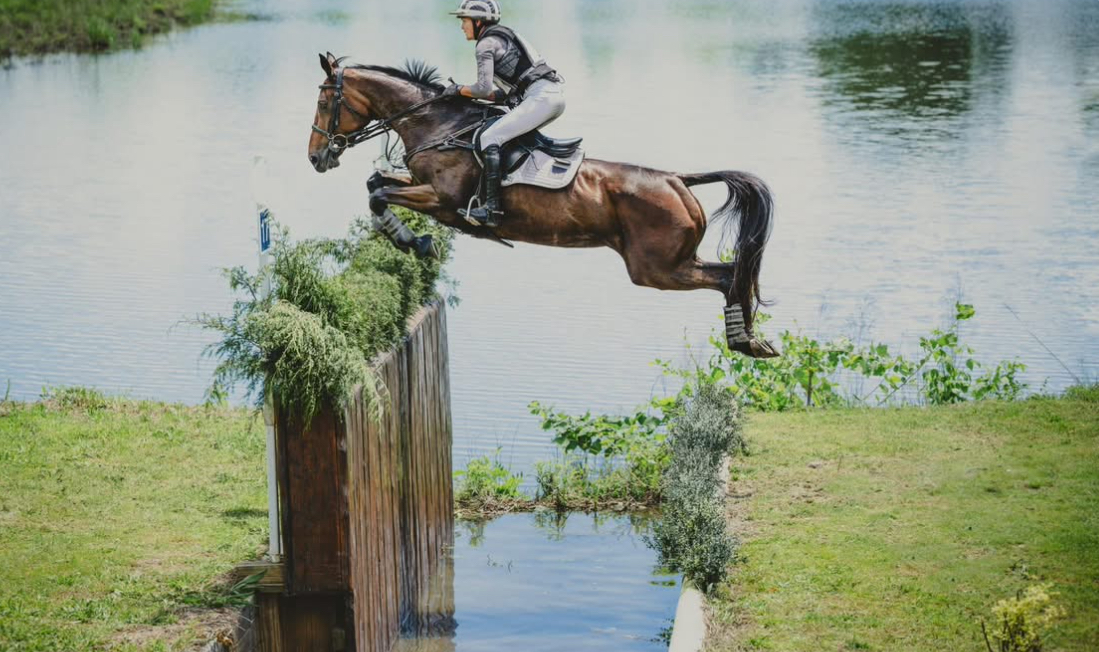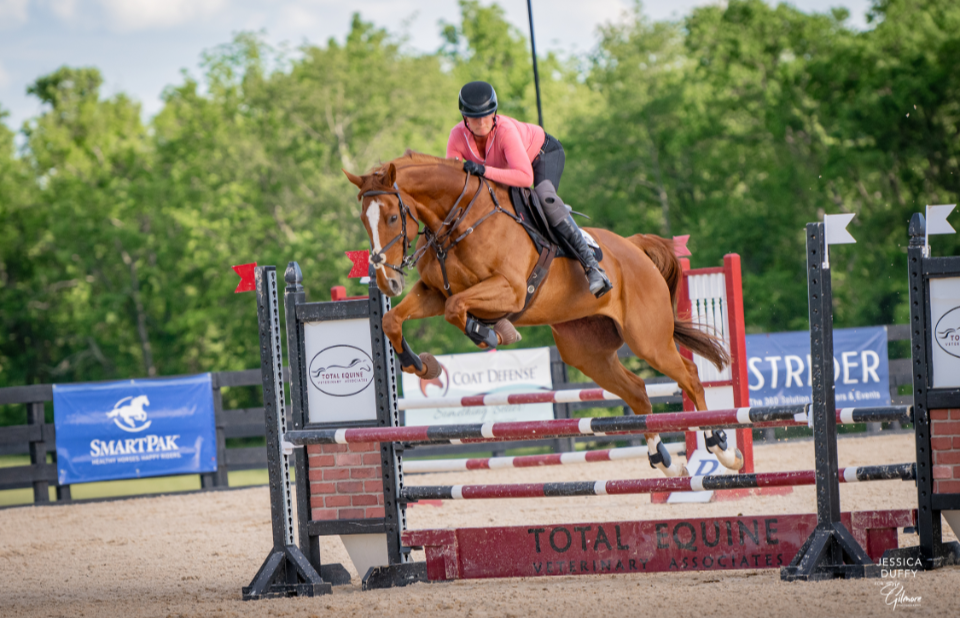Online shopping became a typical way to shop during the Covid-19 pandemic, but most people stuck to basic items like groceries and toilet paper. But with international travel restrictions in place, some people also turned to online shopping to buy big ticket items –- like horses.
In 2021, Covid restrictions had been lifted, Canadian riders Karl and Katlyn Slezak had green cards that were still pending, rendering them unable to travel to Ireland to shop for young horses as they had originally planned. That’s when they went online and purchased Hashtag Verified, (Dignified Van’t Zorgflietout – Miss Nick Nack, by Don Juan de la Bouverie), then five years old, from the Goresbridge “Go for Gold” sale.
All horses at the sale, which is held every November at Barnadown and the Amber Springs Hotel in Wexford, just south of the Dublin airport, is heading into its 13th year in 2022. This year, the Go For Gold sale will take place November 14-16. It typically features 60-70 horses from the age of three that have been pre-selected by a panel of qualified experts as having the potential to be successful event horses.
While a number of top professionals have purchased horses from the sale, amateurs are also welcome to purchase horses. According to the Goresbridge website, “In 2021 the November edition produced a record-breaking turnover of just shy of 1.5million Euros and a top price of 82,000 Euros.”
Hashtag Verified, now six, had competed successfully in Young Event Horse competitions in Ireland. The Slezaks brought him over last November using Equijet (buyers at the Go For Gold sale have access to connections for transport options, making the sale process easier than some may think). Karl said, “I liked his type, he looked like a big, solid horse with a good jump. I had a few friends over there who thought he had a good brain and the quality to be my next upper level horse.”
While Karl considered selling Hashtag Verified and has shown him to a few people as a sales horse, he said the the efforts were half-hearted — what he’d really like to do is put together a syndicate to keep the horse in his barn. For now he plans to produce him and bring him up the levels for a while and see what he comes up with. Consistency has been the key to develop the stunning gray gelding, and Karl will be the first to admit that his busy schedule this year — several trips overseas with top horse Fernhill Wishes, including a trip to FEI World Championships, tend to put other horses on the back burner! — has put the gelding somewhat behind in terms of development. But, he says, more time never hurt anyone and he hopes that the extra practice will pay off as the horse continues to move up the levels. Hashtag Verified finished fourth in his first state-side event in August of this year, ending on his dressage score in the Open Novice at Ocala.
“This was the first one I bought from Go for Gold,” said Karl. “I wouldn’t necessarily buy a horse privately [online], but going through a sale I have people who are there and can sit on it for me, it’s already got a vetting, and it’s been selected by a panel of people that think it’s good enough. It’s not a typical Goresbridge sale even, it’s a select sale, so I feel like I’m minimizing my risk by buying from this sale. I wouldn’t buy sight-unseen from just anybody.”
Considering what advice he might give someone thinking about attending the Go for Gold sale, Slezak said, “I’d advise that anyone horse shopping in Ireland have someone there that they trust, to give them advice, and be able to sit on the horse. Whether online or in person, you always want to have someone you trust to help you. It helps to have an Irish agent – we’ve gone over so many times, we’ve built our connections. Your best option is to go with someone that you know and trust.”
While he wouldn’t be the first to buy a horse after downing a couple of pints, Karl said he prefers to do his horse dealing stone cold sober, or Katlyn will have something to say about it! “I have to admit we’ve done deals at the pub as well, and I almost bought one at the pub last time we were over in Ireland, but Caitlin wouldn’t let me shake his hand – to this day I think it was a good deal, but I’ll say that she was the voice of reason. It can seem like a good idea to buy a horse in the moment!”
Karl and Katlyn have plans to travel back to Ireland this year for the Go For Gold sale. “We are going over this year in person and I’m looking forward to it either way. We always like to pick up new connections. The sale is a base, and we’ve bought probably just as many outside the sale as in the sale. Whether you purchase a horse there or not, it’s a good opportunity to meet people and connect.”







































